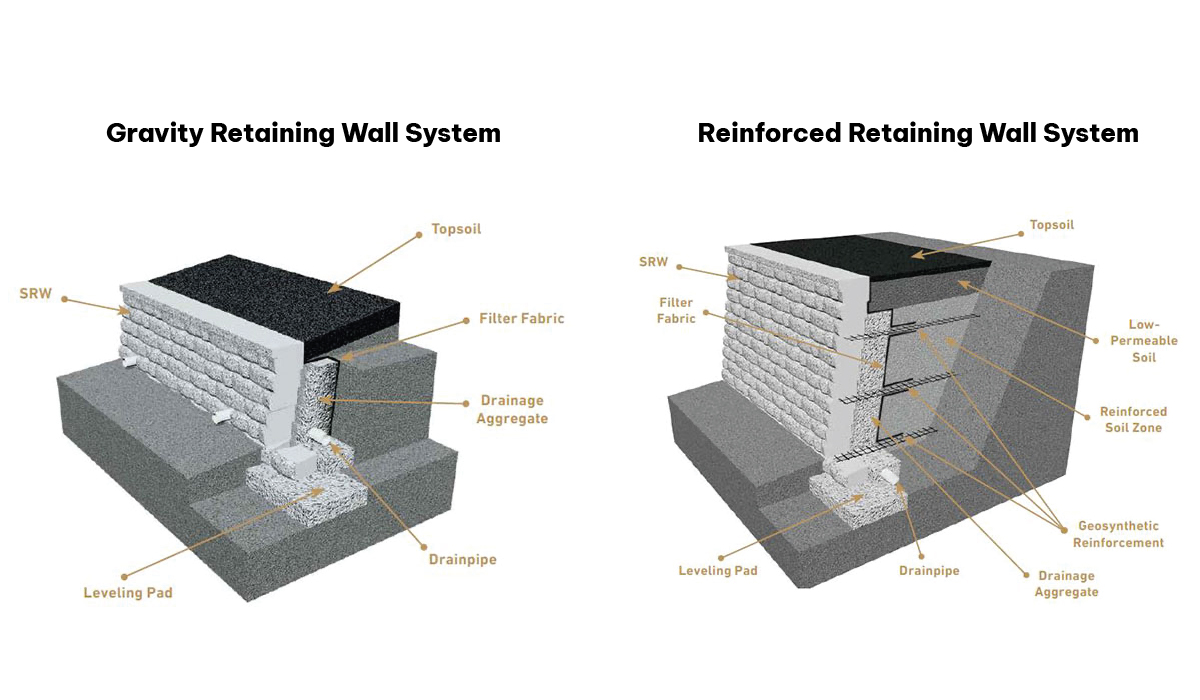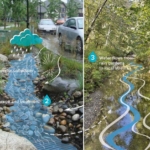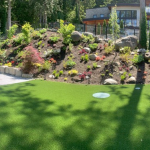Vancouver’s natural landscape is known for its sloped terrain and unpredictable rainfall, making retaining walls an essential feature for many homeowners. Whether you need to prevent soil erosion, create more usable space, or enhance your yard’s aesthetics, a well-built retaining wall can provide stability and style.
However, proper excavation for retaining walls is just as important as their construction. Without a strong foundation and proper drainage, even the most visually appealing retaining wall can fail over time. In this guide, we’ll explore the different types of retaining walls, the importance of excavation, and what homeowners in Vancouver, BC, need to know about local regulations.
Why Retaining Walls Are Essential for Vancouver Homes
The unique geography of Vancouver presents several landscaping challenges. Sloped yards can lead to soil erosion, water runoff issues, and limited outdoor usability. A retaining wall helps by:
- Preventing Soil Erosion – Heavy rains can wash away soil, damaging gardens and foundations. A retaining wall holds the soil in place.
- Creating Level Landscaping – Homeowners can transform sloped yards into functional spaces for patios, gardens, and play areas.
- Improving Drainage – Properly constructed walls include drainage solutions to prevent water buildup and flooding.
- Enhancing Property Value – A well-designed retaining wall adds both curb appeal and practical value to a home.
Types of Retaining Walls
Choosing the right type of retaining wall depends on your landscape, budget, and aesthetic preferences. Here are the most common options:
1. Gravity Retaining Walls
These walls rely on their own weight to hold back soil. Made from concrete, stone, or large stacked blocks, gravity walls are ideal for shorter walls but have height limitations that vary based on the overall design specifications of the wall. Gravity walls can be built up to 4’ tall without consulting an engineer but care should be taken to understand the height limitations of the specific product being installed.
2. Cantilevered Concrete Retaining Walls
A cantilevered wall includes a reinforced concrete base extending into the soil, using leverage to counteract the pressure behind it. This type is often used for medium- to large-scale projects and requires professional excavation for proper installation.
3. Segmental Retaining Walls (SRWs)
These modular walls are made from interlocking concrete blocks and offer a balance between strength and flexibility. SRWs can be small or large walls and may be reinforced to go higher or deal with larger loads.
4. Reinforced Retaining Walls
For high-pressure areas, anchored retaining walls use geogrids, deep rods, or cables to provide additional support. These walls are suitable for challenging landscapes where extra reinforcement is needed.
5. Timber Retaining Walls
Wood retaining walls provide a natural aesthetic and are cost-effective. However, they have a shorter lifespan than stone or concrete options and require a certain amount of reinforcing using wood tiebacks.
Read More: Understanding the Landscape Design-Build Process
The Role of Excavation in Retaining Wall Construction
No matter which type of retaining wall you choose, proper excavation is the key to durability and effectiveness. A poorly excavated foundation can lead to shifting, cracking, or even total wall failure.
Why is Excavation Important?
- Ensures Stability – The base of the wall must be set below the frost line to prevent movement during freeze-thaw cycles.
- Improves Drainage – Excavation allows for the installation of drainage systems, such as perforated pipes and gravel backfill, to reduce hydrostatic pressure.
- Creates a Level Base – Proper excavation levels the area, ensuring the wall is built on a solid, compacted foundation.
- Prevents Future Repairs – Investing in professional excavation reduces the risk of costly structural failures down the road.
Excavation Process for Retaining Walls
- Site Assessment – A professional team evaluates the slope, soil type, access, and water drainage patterns.
- Clearing & Digging – Excavation begins with clearing vegetation and digging to the required depth.
- Compaction & Base Preparation – A compacted gravel or crushed rock base is laid for stability.
- Drainage Installation – Drainage pipes and backfill materials are added to prevent water buildup.
- Wall Construction – The retaining wall is built layer by layer, ensuring proper alignment and reinforcement.
Local Regulations and Building Codes in Vancouver
Before starting a retaining wall project, homeowners must be aware of Vancouver’s building regulations.
Do You Need a Permit?
- Retaining walls over 1.2 meters (4 feet) high typically requires a permit.
- If the wall is supporting a driveway or structure, additional engineering approval may be needed.
- For walls near property lines, you should check your municipal building code for height restrictions.
Drainage Requirements
- Vancouver’s wet climate makes drainage a critical component.
- Walls must include proper weeping tile, gravel backfill, or other drainage solutions to prevent water pressure buildup.
Hiring a Professional vs. DIY
While some small-scale retaining walls can be DIY projects, anything over 4 feet or in a high-pressure area requires expert construction. Professional excavation and retention wall specialists ensure compliance with local codes, long-term durability, and a flawless finish.
Trust Vanskyline Landscape Construction for Retaining Wall installation
Building a retaining wall in Vancouver requires experience, precision, and the right excavation techniques. Vanskyline Landscape Construction specializes in excavation for retaining walls, ensuring every project is built to last.
Why Choose Vanskyline Landscape Construction?
✅ Expert Excavation & Construction – We handle everything from site preparation to final wall installation.
✅ Knowledge of Vancouver’s Terrain – Our team understands the unique challenges of building on sloped and rainy landscapes.
✅ Custom Solutions for Level Landscaping – Whether you need a small garden wall or a large structural retaining wall, we tailor our services to your needs.
✅ Code Compliance & Permits – We ensure your retaining wall meets BC building regulations for safety and durability.
Get Started Today
If you’re considering retaining wall construction in BC, don’t leave excavation to chance. Contact Vanskyline Landscape Construction today for a consultation. We’ll help you create level landscaping in Vancouver with a retaining wall that’s built for beauty and stability.




